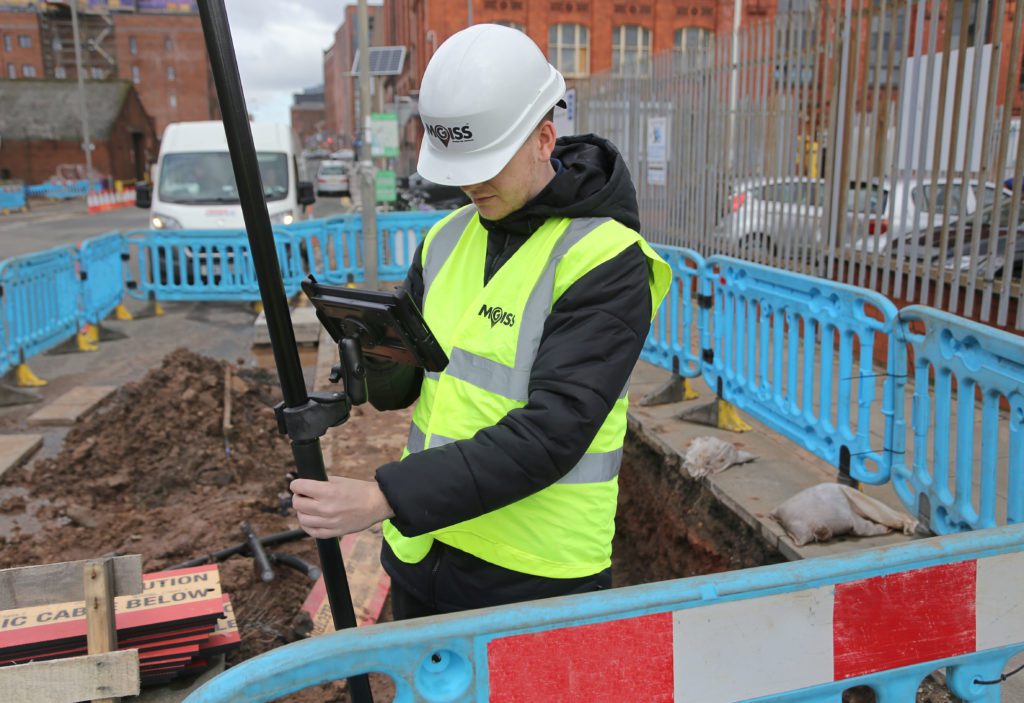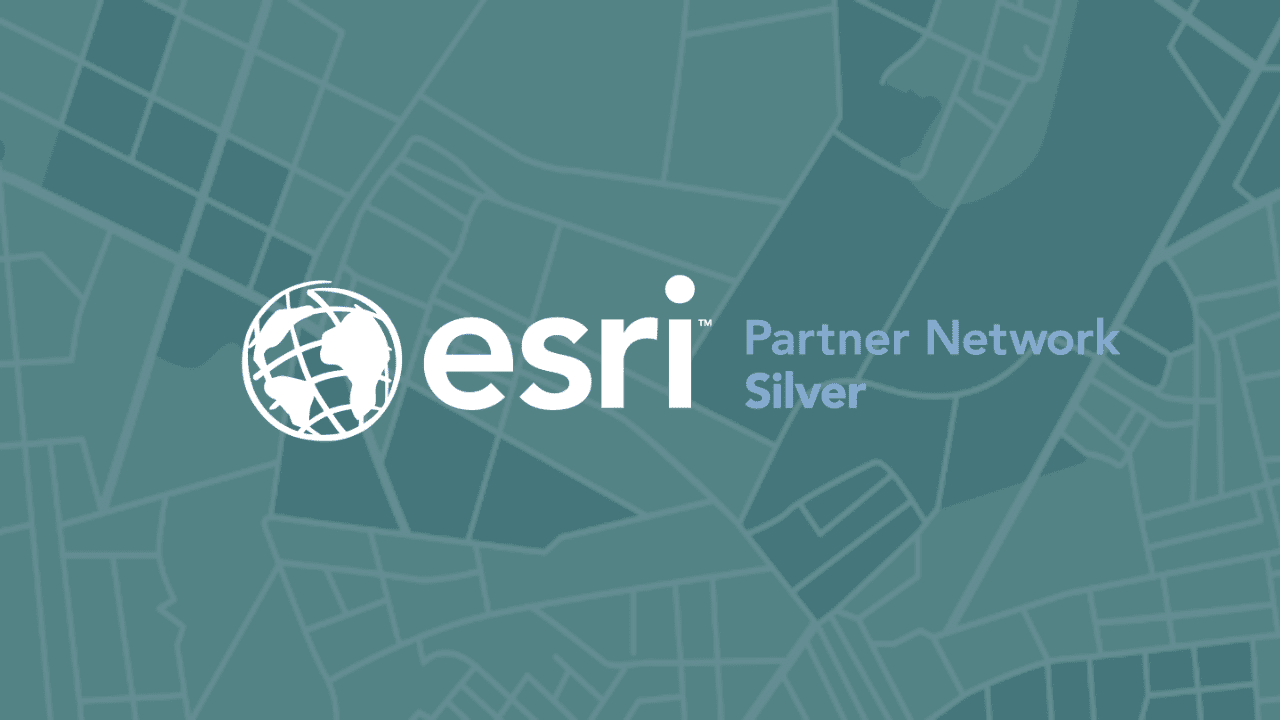The Future of GIS: Trends and Innovations in Geospatial Technology

GIS Technology in its current form dates back to around the mid-1960s and has gone through substantial growth, particularly in the last 30 years. GIS has revolutionised many industries and markets, such as Infrastructure, Environment, Utilities, and even Healthcare. It has not only changed asset management and mapping but also played a role in transforming the virtual world.
GIS has made use of cutting-edge technologies, such as cloud computing, AI, Geo-AI, and machine learning, and is expected to continue growth over the coming years.
Growth in The Market Value of GIS:
Before talking about the innovations and trends, let’s first have an overview of the market value of GIS. GIS technology is evolving and is estimated to progress more in the coming years.
Different factors played a role in the massive demand for GIS in recent years, and some of these factors include, but are not limited to growth in population, urbanisation, and the effects of the COVID-19 pandemic.
According to the UN Committee of Experts, GIS is showing rapid progress due to a few key factors, as follows:
- Technological evolution:
Development of technologies such as augmented reality, visualisations, quantum computing, generativeAI, machine learning, etc.
- Increase in user requirements:
Technology users are increasing daily as it has become a part of our daily life. With this increase in users, their requirements also increase, like demand for real-time data and information, outdoor and indoor mapping, analysis of demographics, products and services, and smart cities.
- Industrial change:
As the industries are growing, their need for more technology is also increasing. The change in work, new collaboration agreements, and also a change in the business market.
- Availability of New Data Sources and Analytical Methods:
Multiple Data sources and their analysis methods, bid data progressing, and digital platforms all are increasing day by day, leading to high demand for GIS technology.

Trends and Innovations in GIS Technology:
GIS technologies are emerging in every field of our lives. Let’s take a look at the emerging trends and innovations of GIS. In recent years, geographic information systems (GIS) have progressed a lot, and the way we collect, analyse and visualise data has changed and become more efficient.
Developments like drone-based data analysis or machine learning algorithms are opening more ways for GIS applications in industries and other sectors. Some technologies are making GIS technology more accessible, these include:
- Cloud computing
- Mobile GIS
- Machine Learning
- Drone-based GIS
- 3D and digital twins
- Automation
- Self-drive cars
- Real-time and extensive data analysis
- Miniaturisation of sensors
- Artificial Intelligence
- AR technology
Miniaturisation of sensors:
The miniaturisation of sensors is leading the market growth to new heights. Due to their small size, they have proven to be quite efficient, cost-effective, and user-friendly. Using these can provide a low-cost and efficient way to collect real-time data.
Artificial Intelligence and Machine Learning:
Managing messy and unorganised data can be a daunting task, but with the aid of artificial intelligence (AI) and machine learning (ML), hidden patterns that may have gone unnoticed can be discovered. These technologies assist in organising and structuring data, making it comprehensible for users. GIS not only strives to enhance the current world but also aims to create a more resilient and sustainable future. Therefore, AI and ML play a vital role for GIS professionals by facilitating data management and comprehension, rather than merely gathering information.
Real-Time and Big Data Analysis:
Real-time data analysis in GIS projects integrates various data sources like sensors and satellites. It processes and analyses the data, visualises it on maps, and provides insights for timely decision-making. Automation, predictive analytics, and integration with IoT and AI enhance its capabilities for better outcomes.
Self-Driving Vehicles:
The trend of driverless vehicles is rising daily. The industry is progressing rapidly and GIS plays an important role in this. LiDAR and Radar are used for their operation, and geospatial details ensure the navigation of these cars.
GIS is pivotal in self-driving vehicles for creating detailed high-definition maps, integrating real-time data from GPS, sensors, and cameras, determining optimal routes, enabling precise localisation, setting geofencing boundaries, identifying hazards, facilitating remote fleet management, and conducting simulation tests for algorithm refinement. These GIS applications enhance navigation, decision-making, and overall safety in autonomous driving.
Geospatial AI:
At its core, geospatial AI uses AI algorithms to analyze and interpret vast amounts of geospatial data, which includes geographic information such as maps, satellite imagery, GPS data, and other spatial data sources. By leveraging AI techniques such as machine learning and deep learning, geospatial AI can automatically identify patterns, detect changes, and predict future events or outcomes related to specific locations.
The applications of geospatial AI are diverse and far-reaching. It can be employed in urban planning to optimize infrastructure development, in environmental monitoring to track changes in ecosystems, and in disaster response to assess the impact of natural calamities and coordinate relief efforts effectively. Additionally, geospatial AI plays a crucial role in agriculture, transportation, logistics, and even marketing by enabling businesses to make location-based decisions and enhance their operations.
GIS in the Cloud:
While the primary use of GIS cloud computing is typically centred around storage, like remotely accessing and analysing spatial data using desktop GIS software, the adoption of GIS as a service is growing rapidly.
One key benefit of embracing cloud technology is the ability to leverage the economy of scale. Through virtualization, service providers can offer GIS features to numerous users, all using the same hardware while accessing private instances of the cloud environment. This efficient approach allows for the cost-effective delivery of GIS services to a large user base.
Geospatial AR technology:
Geospatial AR (Augmented Reality) technology is a system that combines real-world geographic data with computer-generated information to enhance the user’s perception of their surroundings. It overlays digital elements, such as images, graphics, or data, onto the real-world environment through a device like a smartphone or AR headset. Geospatial AR utilises GNSS or other location-based technologies to accurately position and align these virtual elements with the physical world.
This technology allows users to interact with and explore their surroundings in new ways. For example, users can view additional information about buildings or landmarks by pointing their device at them, see virtual directions overlaid on real streets while navigating or visualise underground utilities or hidden infrastructure beneath the surface. Geospatial AR has various applications in navigation, urban planning, architecture, tourism, gaming, and more, making it a valuable tool for enhancing spatial understanding and decision-making.

What is the future of GIS?
GIS technology plays a great role in our life in one way or another. The future of GIS also seems to be optimistic. Many more industries and sectors will know about the vastness of GIS technology and how much value there is in geospatial data. As data analysis, AR, automated devices, and other trends in GIS are reaching their peak all around the globe, more transformation is going to take place in the sectors using these technologies. GIS is also playing a role in managing the population, disasters, emergencies, and even health sectors.
As GIS technology continues to evolve, new ways of analysing, visualising, and managing spatial data will keep emerging.
Looking into the promising future of GIS technology, several upcoming prospects are worth mentioning:
Integration of Virtual Reality (VR): VR technology is expected to merge with GIS at a rapid pace, enabling users to interact with spatial data in various innovative ways. It finds applications in urban management and environmental monitoring.
Expansion of Cloud GIS: Cloud GIS, already widely adopted for its extensive capabilities, is likely to see further expansion due to its popularity as a trend in GIS technology.
Increasing Role of Machine Learning: As machine learning brings ease and efficiency to users, its prominence is anticipated to grow in the future. GIS aims to make these technologies and trends globally common to enhance the world’s resilience.
The scope of GIS is significant across various industries:
Environmental Management: GIS is utilised for weather tracking, natural resources management, wildlife monitoring, and biodiversity assessment.
Retail Market: GIS aids in analysing foot traffic, optimising store locations, and studying sales patterns in the retail market.
HR/Recruitment: GIS revolutionizes HR and recruiting with targeted talent searches, optimized commutes, strategic expansions, efficient facilities management, tailored HR policies, and insights into employee well-being.
Urban Planning: GIS is instrumental in analyzing land usage, demographics, growth patterns, utility mapping and predicting disaster-prone areas.
The continuous development and integration of GIS across these sectors highlight its invaluable contributions to progress and sustainable management.
Trends and Innovations in Geospatial Technology: Final Thoughts
Now that you are aware of the transformative impact of GIS technologies, it is evident that they are driving progress and enhancement in our world. The introduction of various trends and innovations, such as Machine Learning, Artificial Intelligence, Cloud GIS, and Automation, are all geared towards improving our lives and providing convenience.
These advancements open up new opportunities for us, and the market value of GIS is set to soar even higher in the future. Numerous industries and sectors have experienced a revolution due to the rapid adoption of GIS.
Looking ahead, GIS holds a promising future, and its significance will be increasingly recognised by various industries and educational institutions, further raising awareness about its vital role and importance in the market.
About
Empowering your decision making with the asset data truth. Independently advising on the smarter use of Geospatial data, technology and the digital transformation of field operations.



